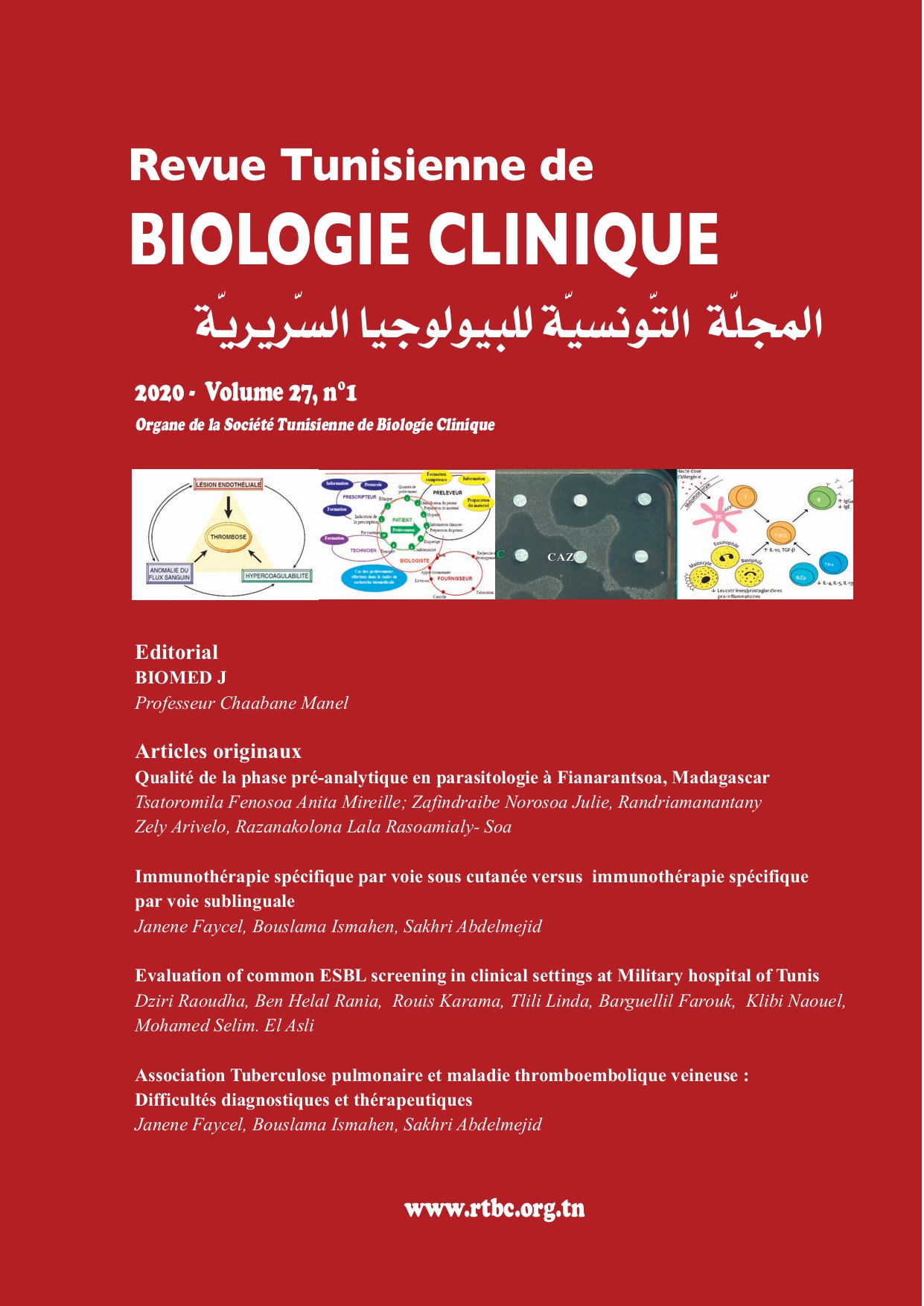Abstract
Purpose: An accurate detection of ESBL in clinical setting is needed for proper therapy, surveillance programs and infection control. The purpose of our study was the evaluation of common ESBL screening methods in clinical settings in Tunisia. Methods: 91 clinical cephalosporin-resistant-Enterobacteriaceae strains, were tested for ESBL production using Synergy test (ST), combined disks (CD), Vitek 2 (V2) and molecular method. Sensitivity and specificity were calculated for each evaluated method. The P value was determined using Epi- Info 7 statistical software. Results: The V2 automated method showed the highest sensitivity and the lowest specificity. However, ST and CD tests showed 100% of specificity with less sensitivity. Low sensitivity was noted in all tested methods for the group 0 (P. mirabilis) and the lowest specificity was observed in the group 3 (E. cloacae, P. stuartii, S. marcescens, E. aerogenes) with the V2 method. Statistical analysis showed significant difference between ST results and molecular results (P<0.05) in contrast to the two remained methods (V2/CD) that showed no significant difference (P˃ 0.05). Our study showed that the most appropriate method for groups G0 (P. mirabilis), G1 (E. coli) and G2 (K. pneumoniae, C. koseri) is the method of V2 in opposite to group 3 where the most reliable method is that of combined disks. Synergy test appear to be the imperfect method with high false negative results. Conclusion: According to our results, we recommend to use the V2 and the CD in order to minimize the error rates of false positive and false negative results.

This work is licensed under a Creative Commons Attribution 4.0 International License.
Copyright (c) 2020 Revue Tunisienne de BIOLOGIE CLINIQUE

